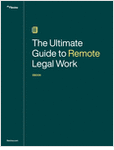The portion of the sentence referring to the amount of the defense costs (“this complex litigation demanding millions of dollars in damages”) responds to the contention that defense costs were excessive. If the underlying action was complex and worth millions of dollars, then defense costs had to be substantial.
As a matter of style, the phrase is interruptive; it forces the reader to wait a long time between subject (“issue”) and verb (“is not”). More significantly, you are playing into the insurer’s strategy by trying to kill two birds with one stone.
The insurer is challenging the amount of the defense costs for two reasons: to gain sympathy — always helpful in the good guy/bad guy game of litigation — and to pick a fight on a fact issue that can’t be resolved by summary judgment. The duty to defend can be determined merely by comparing complaint and policy terms and is therefore a good candidate for summary judgment, but a dispute over the reasonableness of lawyers’ fees would probably involve material issues of fact and would therefore be inappropriate for summary judgment.
The insurer doesn’t need to win the irrelevant argument, that is, to prove that the defense costs were excessive. The insurer merely needs to make the argument appear relevant. Because it involves a fact issue, it is poison for summary judgment. If you blend a response to the merits of the insurer’s irrelevant argument into your point that the argument is irrelevant, you make the irrelevant argument appear relevant.
To be sure, you are reluctant to allow the contention of excessive fees to go unanswered, lest the court think you concede the point. Once the duty to defend is established, you will have to prove the reasonableness of the defense costs.
This instinct is good, but don’t let it divert you from your point, which is that the amount of the defense costs is irrelevant to the duty to defend. After you make that point, you can add, separately, that you disagree with the insurer’s contention that the fees were excessive but refuse to argue the point prematurely. This gives you a chance to reiterate that the amount of the defense costs is irrelevant on a motion to determine the duty to defend.
Some writers might add text or drop a footnote addressing the merits of the defense costs, arguing, for example, that the fees were substantial because the litigation was complex, requiring dozens of depositions and significant motion practice.
Whether to address the merits of the defense cost issue is a judgment call, determined in part by your client’s wish to leave no argument unanswered and in part by your sense of whether the insurer has built sympathy with the excessive fees argument. Courts aren’t supposed to be moved by irrelevant white-hat/black-hat arguments, but sometimes they can’t help themselves.
If the client wants you to respond — and they usually do — you may have to address the issue. If you are concerned about your client’s image with the court, you will want to neutralize the venom.
At this juncture, the court probably doesn’t care whether the defense costs were reasonable. The issue is not ripe because neither side has presented proofs on it. If you feel you have to address the issue, the court won’t hold it against you. The court once had clients of its own.
PUZZLER
How would you tighten and sharpen the following sentence?
Appellate litigants should be aware of their recourse to a motion to the appellate court for a limited remand to the trial court while the appeal is pending where consideration of a particular issue by the trial court will enable full resolution of the controversy by the appellate court.
The posture of the case is implicit in the words “Appellate” and “remand,” permitting you to delete “to the appellate court” and “to the trial court.” The phrase “should be aware of their recourse to” can be shortened to “can move for [a limited remand]” or “ can seek [a limited remand].”
I prefer “can move for” to the shorter “can seek” because it conveys more information. Litigants who do not normally practice in the appellate court might hesitate to use motion practice there.
Shorten “by the trial court” to “below” and improve the passive “will enable full resolution of the controversy by the appellate court” to the more active “will help the appellate court resolve the controversy fully.” Place “fully” in the position of emphasis at the end of the sentence because it is the essence of your point.
Delete “while the appeal is pending” as implicit and delete “particular [issue]” as unnecessary. For extra credit, change “ where consideration of an issue below will help” to “on the ground that consideration of an issue below will help” because one does not have to prove what will happen on remand to move for, or be granted, the remand.
The revised version:
Appellate litigants can move for a limited remand on the ground that consideration of an issue below will help the appellate court resolve the controversy fully.




